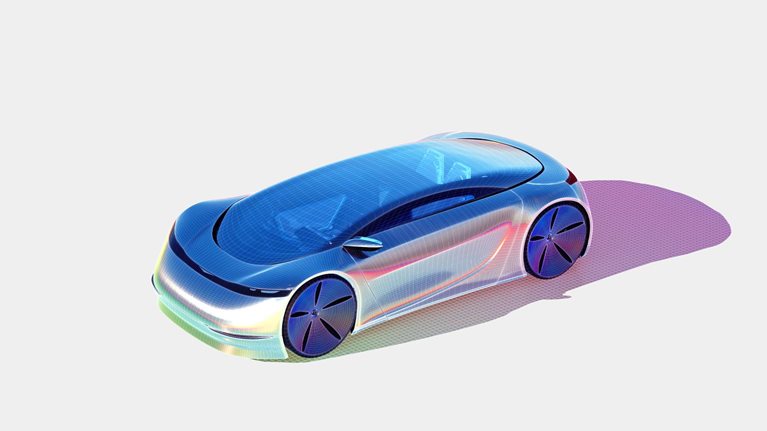Autonomous vehicles (AVs) are off to the races. Today, users in select cities in Asia and the United States can hail rides from autonomous cars and minibuses. AVs are also being tested in Europe, but the path to commercialization there has been a bit more circuitous. Among the challenges that AV executives face in the region: higher regulatory standards, limited investment capital, and competition from extensive and convenient public transportation options.
At a recent autonomous-mobility conference outside Munich, we spoke with executives at four German companies within the AV sector: MOIA, a technology company that provides ridesharing services; Dromos, which designs autonomous, on-demand electric transit systems; Telekom MobilitySolutions, which offers mobility-as-a-service and fleet management services to Deutsche Telekom and its subsidiaries; and Apex.AI, which develops software that helps AVs drive safely. Their insights shed light on current AV trends in Europe and the industry’s future. Edited excerpts of our discussions with the AV executives follow.
How AVs address challenges in public transportation
Olga Nevska, managing director, Telekom MobilitySolutions: There are plenty of opportunities for AVs to disrupt the current ecosystem. One of the biggest problems public transport will face in the coming years is a shortage of bus drivers. In Germany, for instance, we expect there to be an unmet need for 80,000 bus drivers by 2030. Autonomous vehicles can solve this problem for public transport organizations not just in Germany but globally.

Antje Völker, COO, Dromos: Most countries require public transport solutions, but public transport is costly to operate. Today’s high-capacity systems run 20 hours a day, and in the early morning and night hours people aren’t using the trains. Also, many cities—even cities with more than 20 million residents—can’t afford rail-based systems and instead rely on small buses.
With shared AVs, we can provide an affordable solution for cities. We are replacing the old technology of rail-based systems: metro systems, trams, light rail, and the like. Dromos only runs when there is demand, so we can offer services 24/7 at a cost base that is only half that of current public transport systems. Our services are mainly for cities but can also be applied in campuses and other enclosed environments. We’re planning to have our first demonstrator system running in the United Kingdom by the end of 2025, which is 200 years after the first rail system became operational.
AV adoption timelines

Jan Becker, CEO, Apex.AI: In ten years, I hope and expect that companies like Waymo will have scaled to many more cities in North America and Asia. I really hope that they will also scale within Europe. And I hope that European companies will be able to build and scale AVs within ten years. The big money is currently in North America; Waymo has raised over $10 billion. That kind of money is currently not available in Europe.
Sascha Meyer, CEO, MOIA: Predicting timelines in the AV industry has always been complicated. We started MOIA in 2016. We thought we might have driverless vehicles by 2021 and that they would have a 2 to 4 percent modal share in cities with AVs by 2025. But then we realized there are edge cases and other issues that must be addressed. It’s not only about the drive function; it’s about the whole ecosystem and how you integrate the different pieces.
But we’re getting there. Within a five-to-seven-year time frame, I believe we’ll see autonomous vehicles in European cities. Europe has very complex regulations and safety requirements for AVs, including those mandating redundancies for brakes, steering, and energy supply. But we know that our vehicle was built to pass the bar the regulator has set, and once we pass this bar, we will be ready to operate driverless vehicles commercially. We have learned a lot in the industry, so I think we can be more confident in our predictions. But I still expect surprises every day.
Olga Nevska: By 2035, I believe autonomous mobility will be more accessible, inexpensive, and integrated into everyday life. I can imagine being supported by an intelligent AI assistant that proactively manages my day. While I’m preparing breakfast for my daughter, it might suggest the best mode of transport based on weather, traffic, and my schedule. On a sunny morning, I might take an e-scooter to an autonomous shuttle hub, while my daughter is picked up by an autonomous vehicle and taken to school. Mobility will become not just a service but an intelligent, personalized, purpose-driven experience.
The potential impact on car ownership
Martin Dürr, chief technology officer (CTO), Dromos: In the past, cities have been built around the car. The car was the dominant transportation mode and the city basically had to follow. We’re trying to change that and give the city back to humans by making shared autonomous mobility a catalyst for more sustainable and cost-effective living. At Dromos, our objective is to provide the quality of a taxi ride for the price of a bus ticket. Dromos is an on-demand system, and it’s a private ride, so you don’t have to share. You can if you want to, but you don’t have to. That changes the willingness to forgo your own car and take public transport, because the offer is substantially different.
Olga Nevska: The most exciting thing about mobility for me is the pace of change—both the technological disruption and the shift from ownership to shared use. Today, there’s a strong personal connection between a car owner and the car. But I see a major opportunity to rethink this model. Autonomous mobility can help people use vehicles more sustainably and efficiently, based on their real needs.
We need to think about mobility as not just moving from point A to point B; it’s also the time we’re spending in the vehicle. With the advent of autonomous driving, the time spent in a vehicle will no longer be passive—it becomes usable for work or leisure. This opens the door to entirely new business models: from in-vehicle entertainment and productivity platforms to personalized services and commerce. The autonomous car offers not just transport but meaningful moments.
I see two major challenges when it comes to autonomous driving: first, vehicle ownership, and second, operations—particularly maintenance. I know, from my experience managing one of Europe’s largest corporate fleets, that maintenance and cleaning are among the most significant expenses. This is often underestimated. Large fleet operators have the expertise and infrastructure to manage these processes efficiently—and can reduce the total cost of ownership.
The importance of a consumer-centric approach
Sascha Meyer: I think consumer awareness is the largest challenge we have yet to solve. A lot of people in our industry are focused on building the best tech possible: the best sensors, the best AI, the best performance. The consumer sometimes is an afterthought. In cities, which are the environments in which we primarily operate, there are a lot of people—and people have emotions, so we need to take them along for the ride. It’s not just about the technology; it’s also about considering the application of the technology and who it helps.
Martin Dürr: When we first started in the United Kingdom, one of our projects involved a partnership with a company called Transport for All, which offers solutions for people with mobility challenges. At first, we thought this meant accommodating the occasional person who uses a wheelchair or walker, but Transport for All opened our eyes and minds: It’s not only about wheelchairs and walkers. It’s also about people with dementia, which is as big a problem as physical limitations.
In the United Kingdom, 25 percent of the population qualifies as having mobility challenges, and it’s not so different elsewhere in the world. Many people who have mobility challenges are afraid of using a subway, and they’re not taking cars because they’re afraid to drive on their own, so they’re basically doomed to stay at home. If a quarter of the population is excluded from transport, imagine what that means in terms of the social impact on a society. This is why the consumer has to be front and center. It’s not just about technology.
Antje Völker: The importance of the customer is baked into our leadership structure. At Dromos, we don’t have a CEO. Martin is the CTO and I am the COO. We believe that our solution needs to consider both technology and operations at the same level. I have a degree in psychology, which has affected how I approach my job. Thinking about the user and what makes people choose a mode of transportation is very important, especially when you provide entirely new systems and new offerings. We definitely look at people’s decision-making processes when we are designing the optimal operational experience.
Artificial intelligence and AVs
Jan Becker: In the past five years, companies have begun using end-to-end machine-learning-based approaches versus rule-based approaches [engineered by humans]. Tesla has this technology in its current cars, at the L2 stage [of partial automation], and it works surprisingly well. But I’m not sure if we can expect all autonomous vehicles to be end-to-end AI-based in five years’ time. When you look at gen-AI-based approaches to consumer technology, there are still a lot of failures. Making it perfect is the hard part.
Sascha Meyer: AVs wouldn’t be possible without AI, and I think AI will continue to have a big impact on AVs in the coming years. Today, we use AI in the perception capability of the safe driving system. Our partner, Mobileye, has software that has proved capable of understanding the environment in which vehicles are operating by using data from cameras, lidar, and radar. Vehicles then combine all those different inputs to understand where they are and how they should behave. If we apply AI end to end, it will help us create more capable systems [than ones that run on today’s rule-based approaches]. They will be able to deal with edge cases that you can’t even imagine.
The most critical skills
Jan Becker: We require very specific talent at our company. Building real-time and reliable embedded systems is something you don’t typically learn at university. It requires extra effort to gain those skills, either by working for us or at another company. Those roles aren’t easy to fill.
In the future, the roles that are going to be hardest to fill are gen AI roles—not just talent who can apply gen AI but also talent who can actually build the foundational model from scratch. Computer science skills are critical, including those related to building robust, reliable software or AI systems. Those skills will always be needed.
Sascha Meyer: Optimizing city fleets requires data, and that means we need data engineers, algorithmic engineers, and machine learning engineers who can make sense of the data gathered and enable automation. Those are the most important skill sets that we need. At the same time, we need to tackle complex engineering tasks in the vehicle, and we need skilled people who know how to build reliable and safe cars. That’s what our partnership with Volkswagen brings to the table. Finally, we need great software engineers who take it to the next level by integrating complex systems, such as those for steering the car and controlling it from the cloud.
Olga Nevska: As we transition from a diesel-powered fleet to an electric AV fleet, the required skill set has also shifted. We increasingly look for talent in data analytics, software development, and customer experience. Understanding user needs and translating them into digital solutions is becoming just as essential as technical expertise. And I think these will be key to shaping the future of mobility.
At the same time, our customer base is becoming more diverse—in terms of gender, age, and nationality. To truly meet their needs, it’s important to have diverse teams so we can build solutions that are inclusive, intuitive, and relevant to everyone.


